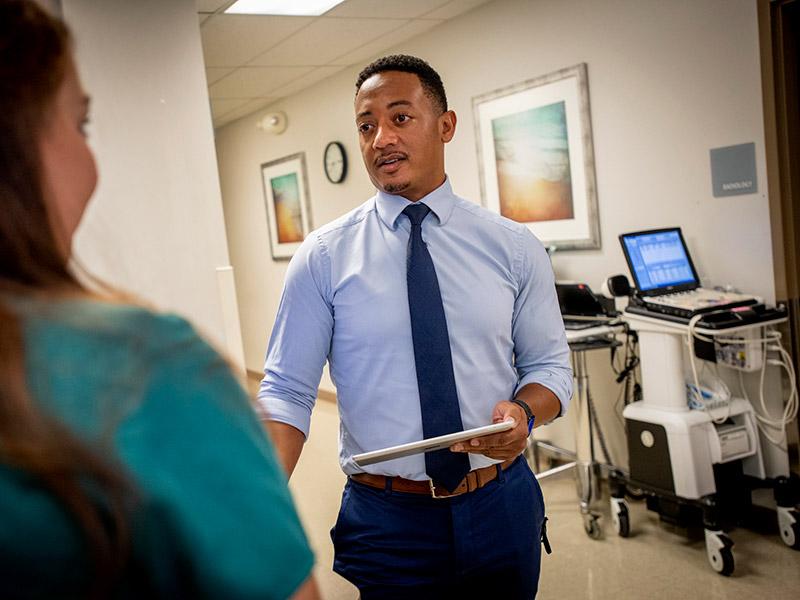Hypermobility clinic offers life-changing treatment for patients
Three years ago, Stacey Welch watched her son Ozzie, now 15, go from being an all-star athlete to barely being able to walk within a matter of weeks.
“He was in a wheelchair off and on because he was in so much pain that he couldn't move,” Welch said. “His pain was so severe, and we went from doctor to doctor, and nobody was able to figure out what was causing the pain.”
After visiting multiple doctors, Ozzie’s pain only grew. Still, Welch was determined to crack the mystery behind what was causing her son, a normally active and athletic child, to experience what he described as “horrible pain” that was quickly decreasing his quality of life.
“One day I was talking to a friend of mine who has hypermobile Ehlers-Danlos, and I called her about something completely unrelated, but I told her about some of the symptoms Ozzie was experiencing, and that’s when she told me about Dr. Courseault,” Welch said. “It was a long shot — but we had seen so many doctors already at that point, so I figured it wouldn’t hurt to see one more, so we made an appointment.”
Welch says if she hadn’t met Dr. Jacques Courseault, sports medicine physician at Tulane University School of Medicine, she doesn’t think she and Ozzie would have ever found answers.
“He diagnosed my son with hypermobility type Ehlers-Danlos syndrome (EDS), and I feel like he saved my son’s life, not because my son was going to die, but the quality of life that he has now and our outlook for the future is completely different now than it was before we met Dr. Courseault,” Welch said. “Ozzie wants to be a doctor now, and he specifically says that he wants to be like Dr. Courseault so that when someone is in pain, they can actually get help.”
Ozzie is one of Courseault’s many patients who were experiencing various symptoms such as low blood pressure and dental issues paired with non-operative musculoskeletal injuries.
As part of his treatment plan for these patients, Courseault sought out specialty clinics that focus on EDS, only to learn that there are only a few of them in the world.
To ensure these patients had access to the proper treatments they needed, Courseault launched the Tulane Hypermobility Clinic, supported by Tulane School of Medicine and the Department of Orthopedics. On the day that the clinic opened, the center’s team of specialists were booked for six months.
“We use a novel technique called ultrasound-guided hydrodissection of the fascia, which helps patients move better, decreases pain, and improves overall function and quality of life,” Courseault said. “We work with our Tulane and community partners to address other associated co-morbidities, including cardiac, allergy, neurological and psychiatry-related issues. We also use a similar technique to treat patients and athletes who aren’t hypermobile but have non-operative injuries such as back or neck pain.”
Although there is no known cure for EDS, the Tulane Hypermobility Clinic has given hope to many patients that have been suffering for years.
Elizabeth Boh, another patient who was treated by Courseault, had been through 30 years of symptoms and surgeries and didn’t have any idea what was wrong.
“To have someone understand the disease and be able to treat all the different symptoms it causes really makes a huge difference. I feel a lot better in the year and a half that Dr. Courseault has been helping me. It’s been a life-changer,” Boh said.
The waitlist for the clinic is nearly three years long, but Courseault hopes to see patients sooner and increase the EDS and fascia research and education being done at Tulane, so doctors all over the world will know more about how to treat patients that are hypermobile.
“I didn’t mean to get into this, and never did I think I’d be treating an autosomal dominant genetic disorder,” said Courseault. “But once you see them, you recognize that you can’t ignore that these patients and athletes have a different body type and need to be treated differently.

